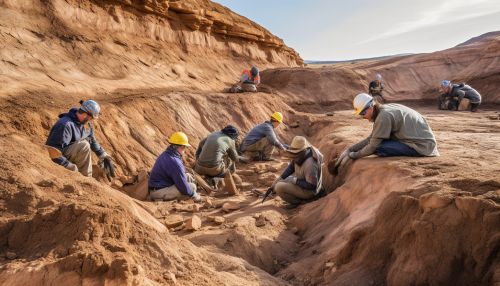Paleoanthropology
Introduction
Paleoanthropology, also known as human paleontology, is a specialized branch of anthropology that combines the disciplines of paleontology and physical anthropology. This scientific field is dedicated to the study of the history and development of the human species, Homo sapiens, through the examination of fossil evidence.
History of Paleoanthropology
The field of paleoanthropology has its roots in the 19th century when the first fossil evidence of early human ancestors was discovered. The term "paleoanthropology" itself was first coined by French scientist Armand de Quatrefages in the late 19th century. The field has since evolved and expanded, incorporating new methodologies and technologies to better understand human evolution.


Methodologies in Paleoanthropology
Paleoanthropologists use a variety of methodologies to study human evolution. These include the excavation and analysis of fossils, the study of ancient DNA, and the use of advanced imaging technologies.
Fossil Excavation and Analysis
The excavation and analysis of fossils is a fundamental aspect of paleoanthropology. Fossils provide direct evidence of early human ancestors and can reveal important information about their physical characteristics, behaviors, and environments. Fossil analysis often involves the use of comparative anatomy, where the physical features of a fossil are compared to those of modern humans and other primates.
Ancient DNA Analysis
The analysis of ancient DNA is a relatively new methodology in paleoanthropology. This technique involves extracting and sequencing DNA from ancient human remains, allowing scientists to study the genetic makeup of early human populations. Ancient DNA analysis can provide insights into human migration patterns, interbreeding events, and the evolution of human diseases.
Imaging Technologies
Advanced imaging technologies, such as computed tomography (CT) scans and magnetic resonance imaging (MRI), are increasingly being used in paleoanthropology. These technologies allow scientists to create detailed three-dimensional images of fossils, revealing internal structures that cannot be seen with the naked eye. Imaging technologies can also be used to study living primates, providing insights into the function and evolution of various physical traits.
Major Discoveries in Paleoanthropology
There have been numerous significant discoveries in the field of paleoanthropology that have greatly enhanced our understanding of human evolution.
Discovery of Australopithecus
The discovery of Australopithecus in the early 20th century was a major milestone in paleoanthropology. Australopithecus is a genus of hominins that lived in Africa between about 4 and 2 million years ago. The discovery of Australopithecus fossils provided the first solid evidence of a hominin species that exhibited both human-like and ape-like characteristics, supporting the theory of human evolution.
Discovery of Homo habilis
The discovery of Homo habilis in the 1960s was another significant event in the history of paleoanthropology. Homo habilis is considered the earliest member of the genus Homo and is believed to have lived between 2.1 and 1.5 million years ago. The discovery of Homo habilis fossils, along with evidence of tool use, marked a major shift in our understanding of human evolution.
Discovery of Neanderthals
The discovery of Neanderthals in the mid-19th century was one of the first indications that humans were not the only hominin species to have existed. Neanderthals are a close relative of modern humans and lived in Europe and Asia until about 40,000 years ago. The study of Neanderthal fossils and DNA has provided valuable insights into human evolution, including evidence of interbreeding between Neanderthals and early modern humans.
Current Research and Future Directions
Current research in paleoanthropology is focused on a number of key areas. These include the study of early human migration patterns, the evolution of human behavior, and the impact of climate change on human evolution.
Future directions in paleoanthropology are likely to involve the increased use of genetic technologies and the integration of multiple lines of evidence to create a more comprehensive picture of human evolution.
